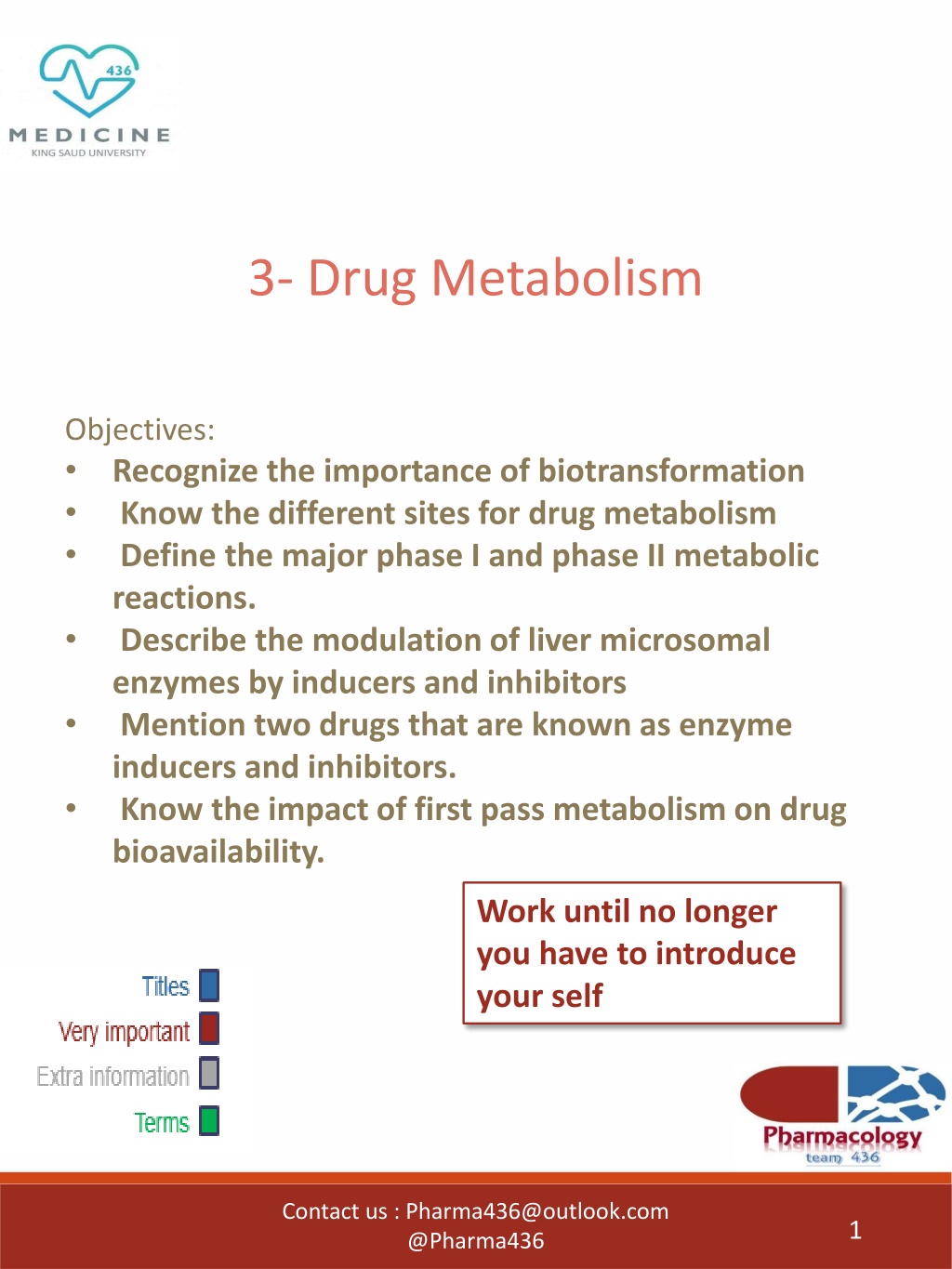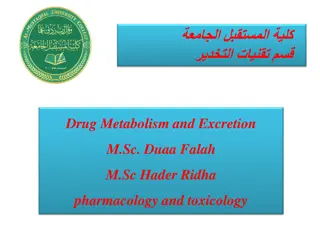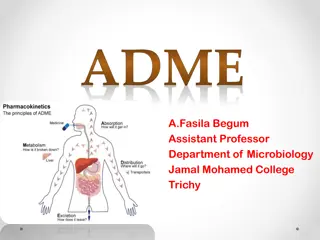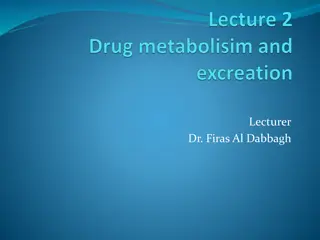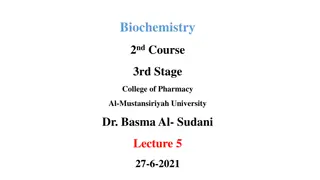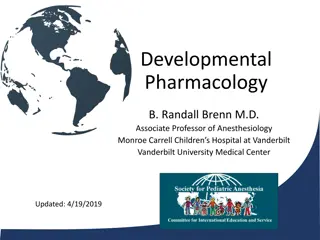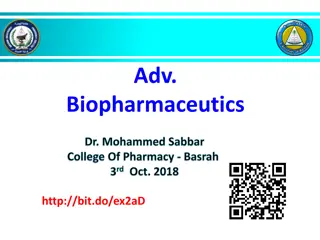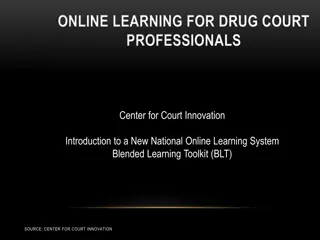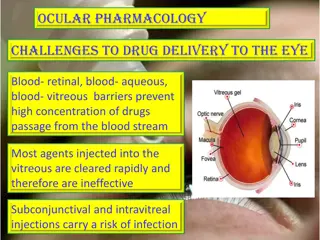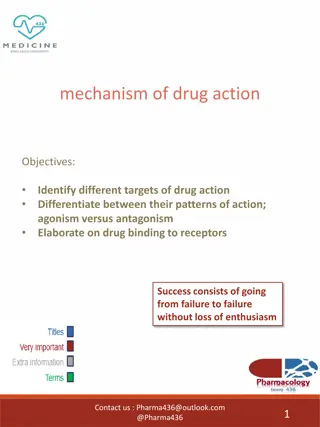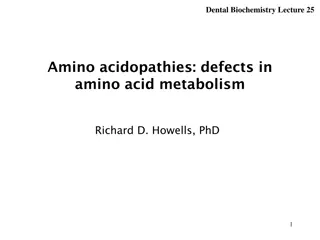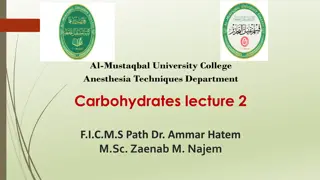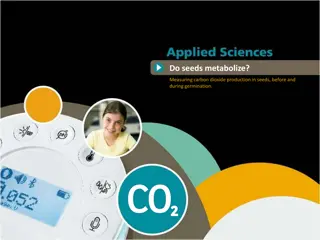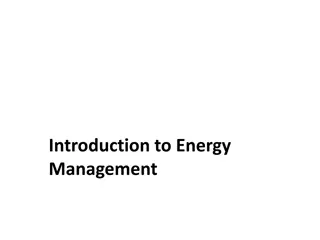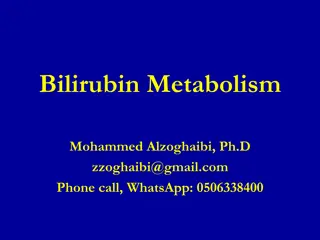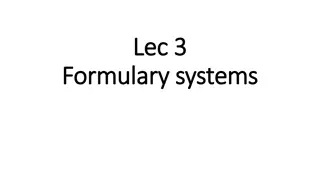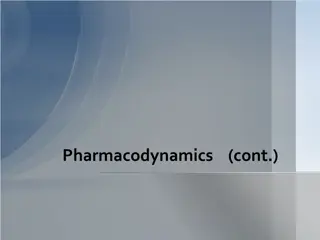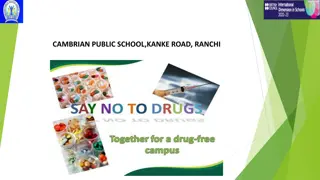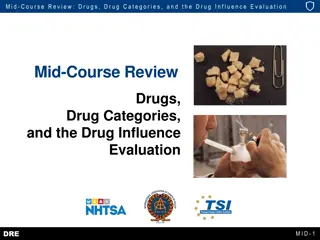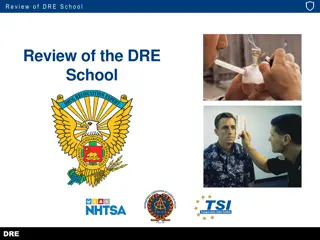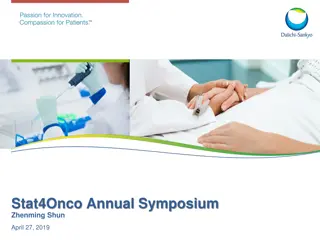Understanding Drug Metabolism: Importance and Mechanisms
Drug metabolism is a crucial process in the body that transforms drugs into forms easily excreted, affecting their efficacy and toxicity. This involves different sites such as the liver, kidney, and plasma, with enzymes in cellular organelles like cytoplasm and mitochondria playing key roles. First-pass metabolism, enzyme modulation, and the impact on drug bioavailability are vital aspects to consider. Recognizing the significance of biotransformation, knowing phase I and II reactions, and understanding enzyme inducers and inhibitors are essential in pharmacology.
Download Presentation

Please find below an Image/Link to download the presentation.
The content on the website is provided AS IS for your information and personal use only. It may not be sold, licensed, or shared on other websites without obtaining consent from the author. Download presentation by click this link. If you encounter any issues during the download, it is possible that the publisher has removed the file from their server.
E N D
Presentation Transcript
3- Drug Metabolism Objectives: Recognize the importance of biotransformation Know the different sites for drug metabolism Define the major phase I and phase II metabolic reactions. Describe the modulation of liver microsomal enzymes by inducers and inhibitors Mention two drugs that are known as enzyme inducers and inhibitors. Know the impact of first pass metabolism on drug bioavailability. Work until no longer you have to introduce your self Contact us : Pharma436@outlook.com @Pharma436 1
DrugMetabolism: It is the chemical reactions which occur in the body to change drugs from nonpolar lipid soluble forms to polar water soluble forms that are easily excreted by the kidney. Importance: Inactivation or terminationof drug action (mostdrugs). DetoxificationBiotransformation is required for protection of body from toxicmetabolites. Activation of prodrug*(convert inactive form of drug to active form) e.g. levodopa - carbidopa, prednisone prednisolone *an inactive substance that is converted to a drug within the body by the action of enzymes or other chemicals. Organ sites of drugmetabolism: 1- Liver (the major site).* 2- kidney 3-skin 4- lung 5- Intestinal Mucosa and Lumen: Gut Mucosa: MonoAmine Oxidase (MAO) . Gut lumen (bacterial flora): Glucouronidase. 6- Plasma: *because it is a large organ, and there are high concentrations of most drug- metabolizing enzyme systems substrate Enzymes (in the plasma) Catechol O-Methyl Transferase (COMT) catecholamines (e.g. adrenaline) Esterases Esters (acts on drugs as Local Anesthetics) Amidases amides (act on drugs as Local Anesthetics) Contact us : Pharma436@outlook.com @Pharma436 2
REMEMBER THERE IS AN ORGAN SITE AND A CELLULAR SITE. BE CAREFUL. Cellular sites of drug metabolism CYTOPLASM* MITOCHONDRIA MICROSOMES* LYSOSOMES e.g. Alcohol dehydrogenase** (NAD+ NADH) (boy s slides) (oxidation of alcohol). Alcohol Aldehyde Acid Ethanol acetaldehyde acid CH3CH2OH CH3CHO CH3COOH *Is the material or protoplasm within a living cell, excluding the nucleus. So we will find there a lot of enzymes that play a role in the drug metabolism and one **(ADH) (EC 1.1.1.1) are a group of dehydrogenase enzymes that occur in many organisms and facilitate the interconversion between alcohols and aldehydes or ketones with the reduction of nicotinamide adenine dinucleotide (NAD+ to NADH). Microsomal enzyme system = Cytochrome P- 450. There are more than 20 families CYP1, CYP2, CYP3 Sub-families are identified as A, B, and C etc. In human: only 3 isoenzyme families are important CYP1, CYP2 and CYP3 Oxidation Cytochrome P-425: CYP 3A4/5 carry out biotransformation of the largest number (30-50%) of drugs. Expressed in the liver and intestine (responsible for first pass metabolism at this site). There are several chemicals in this organelle that plays an important role in the drug metabolism, those are: 1- N-acetyl transferase*: Introduction of acetyl group (CH3COO- ) . 2- Monoamine oxidase enzyme **(MAO): oxidation of catecholamines as adrenaline. *an enzyme that catalyzes the transfer of acetyl groups from acetyl-CoA to arylamines. **a family of enzymes that catalyze the oxidation of monoamines neurotransmitter. They are found bound to the outer membrane of mitochondria in most cell types in the body. Contact us : Pharma436@outlook.com @Pharma436 3
Catechol o-methyl transferase (COMT) Any drug has the catechol ring will metabolize by the COMT enzyme. This enzyme will add Ch3 on one of the OH and remove H, so it will transfer Ch3 to O atom Monoamine oxidase (MAO) aldehyde group Amine group 1 acid 2 1- The MAO enzyme will oxidize the amino group (NH2) by remove NH2 and add O instead, this will give me aldehyde 2- another enzyme (aldehyde dehydrogenase) will add another O to the aldehyde group to make acid Types of hepatic metabolic reaction: Two phases of hepatic metabolism reactions: Phase I Phase II * Oxidation Metabolism * Reduction Conjugation * Hydrolysis After Phase I: (The metabolites) 1. Active = lipid soluble > Phase II 2. Inactive = water soluble (excreted) After Phase II: (The metabolites) Inactive = water soluble (excreted) Contact us : Pharma436@outlook.com @Pharma436 4
Oxidation Addition of oxygen or removal of hydrogen Most important drug metabolizing reaction Microsomal Occurs in microsomes E.g. cytochrome P450 enzyme, NADPH, and oxygen Nonmicrosomal Occurs in cytosol or mitochondria Oxidase Dehydrogenases Are required for oxidation of alcohols. E.g Alcohol dehydrogenase (alcohol aldehyde) E.g. Aldehyde dehydrogenase (aldehyde acid) Monoamine Oxidase (MAO) Responsible for the metabolism of catecholamines as adrenaline and serotonin E.g. Moclobemide (MAO inhibitor used as an antidepressant drug by increasing serotonin in the brain) Xanthine Oxidase Required for the oxidation of xanthine. Hypoxanthine xanthine uric acid accumulation of uric acid GOUT E.g. Allopurinol (inhibitor of xanthine oxidase used in treatment of gout) Contact us : Pharma436@outlook.com @Pharma436 5
Reduction: Removal of oxygen or addition of hydrogen. May be microsomal or non-microsomal E.g.: levodopa DOPA- decarboxylase Levodopa(DOPA) Dopamine Hydrolysis Occurs by addition of water molecules in presence of enzymes as (esterase & amidases) All are non microsomal Amid bond Amidases hydrolyze drugs that are amides Esterase hydrolyze drugs that are esters Amide + H20 Acid + amine e.g. Amides as lidocaine (used as local anesthetic) Ester + H20 Acid + Alcohol e.g. Esters as acetylcholine (neurotransmitter). Acetylcholine acetate + choline. ( + ( ) + ) + ) ( + Contact us : Pharma436@outlook.com @Pharma436 6
Phase I result in: Activation of pro-drug e.g. levodopa to dopamine. Inactivation of drug (termination of action). Conversion of active drug to active metabolite. Conversion of nontoxic drug to toxic metabolite. Paracetamol hepatotoxic metabolite (hepatic necrosis) Product might undergo phase II Conjugation: coming from (phase I) with endogenous substance as methyl group, acetyl group, sulphate, amino acid or glucuronic acid to produce conjugate that is water soluble and easily excreted in urine or bile. Types of conjugation reaction: Conjugation reaction Enzyme required glucouronide conjugation Glucouronyl transferase Acetylation (CH3COO-) N-acetyl transferase Sulphation (SO42-) Sulfo transferase Methylation (CH3) methyl transferase Amino acids conjugation Glycine Transferase PhaseII metabolic reactions: All are non microsomal exceptglucouronidation Glucouronide conjugation is a microsomal process (the most common of phase II reactions). Deficieny of glucouronyl transferase enzyme in neonates may result into toxicity with chloramphenicol (Gray baby syndrome). Contact us : Pharma436@outlook.com @Pharma436 7
Characteristics of Phase IIproduct: Usually pharmacologicallyinactive. Polar more watersoluble. Easily excreted in urine. Factors affecting metabolism: The factor The rate of metabolism Decrease ( ) in neonates & elderly. AGE Decrease ( ) in liver diseases. DISEASES Decrease ( ) in binding protein Degree of Protein Binding increase ( ) in the Induction decrease ( ) in the Inhibition Concurrent use of drugs Decrease ( ) in malnutrition Nutrition Genetic polymorphism : Metabolism may vary from population to another due to the existence of different forms of the metabolic enzymes. E.g. Isoniazid (anti-tuberculosis drug) Slow acetylator phenotype results in decrease in isoniazid metabolism & accumulation of isoniazid with risk of peripheral neuropathy the enzyme which will metabolize the drug (isoniazid) has genetic problem so the rate of metabolism is slow that will lead to accumulation of the drug and causes disease (peripheral neuropathy) Rapid acetylator phenotype results into excess metabolites produced with risk of hepatitis the enzyme which will metabolize the drug (isoniazid) has genetic problem so the rate of metabolism is high which will accumulate the drug in the liver and toxics the liver then cause hepatitis Enzyme Induction &inhibition: Liver microsomal enzymes inducers : drugs that increase activities of liver microsomal enzymes & increase the metabolism of drug itself and other drugs taken with the inducer at the sametime. Liver microsomal enzymes inhibitors : drugs that decreaseactivities of liver microsomal enzymes & decrease the metabolism of the drug itself and other drugs taken concurrently Contact us : Pharma436@outlook.com @Pharma436 8
Enzyme Enzyme inducers Enzyme inhibitors Erythromycin Grape fruits Cigarettesmoking Phenobarbitone (hypnotic) Phenytoin Alcohol (antibiotic) Cimetidine (anti- ulcer) (antiepileptic) Rifampicin (Anti TB) Ketoconazole (antifungal) Enzyme Induction* Enzyme induction may result in: the metabolism and excretion of the inducer drug itself and co-administered drugs.** the action of the inducer drug itself & co-administered drugs. Tolerance: decrease in the pharmacological action of the drug by continuous or repeated administration . Drug interactions: decrease in action of one drug by administration of another drug. e.g. oral contraceptives & phenytoin (An enzyme inducer) (Failure of oral contraceptive (birth control pills) may lead to pregnancy if combined with phenytoin) Enzyme Inhibition: Enzyme inhibition may result in: Delay the metabolism and excretion of the inhibitor drug and co-administered drugs. Prolong the action of the inhibitor drug & co-administered drugs. e.g. warfarin & erythromycin (inhibitor). (inhibition of warfarin metabolism may lead to increase its anticoagulant effect risk of bleeding ) Notes: *An enzyme inducer is a type of drug that increases the metabolic activity of an enzyme. **There s a difference between metabolism & action of the drug. Explanation: in inhibition, we are blocking the thing that breaks the drug down, #therefore increasing the action of the drug. Co-administered: taken at the same time. Contact us : Pharma436@outlook.com @Pharma436 9
Extra notes Lippincott corner The kidney cannot efficiently eliminate lipophilic drugs that readily cross cell membranes and are reabsorbed in the distal convoluted tubules. Therefore, lipid-soluble agents are first metabolized into more polar (hydrophilic) substances in the liver via two general sets of reactions, called phase I and phase II. Phase I Phase I reactions convert lipophilic drugs into more polar molecules by introducing or unmasking a polar functional group, such as OH or NH2. Phase I reactions usually involve reduction, oxidation, or hydrolysis. Phase I metabolism may increase, decrease, or have no effect on pharmacological activity. A) Phase I reactions utilizing the P450 system: The phase I reactions most frequently involved in drug metabolism are catalyzed by the cytochrome P450 system (also called microsomal mixed- function oxidases). The P450 system is important for (1) the metabolism of many endogenous compounds (such as steroids, lipids) and (2) the biotransformation of exogenous substances (xenobiotics). Cytochrome P450, designated as CYP, is a superfamily of heme-containing isozymes that are located in most cells, but primarily in the liver and GI tract. CYP3A4 (3 = family / A = subfamily / 4 = specific isoenzyme) Considerable amounts of CYP3A4 are found in intestinal mucosa, accounting for the first-pass metabolism of drugs. Phase I reactions not involving the P450 system: These include: Amine (histamine, catechol) oxidation, Alcohol dehydrogenation (ethanol oxidation) [remember oxidation means adding an oxygen or removing a hydrogen], Esterases (metabolism of aspirin in liver), Hydrolysis (procaine) A) 1. 2. 3. 4. Contact us : Pharma436@outlook.com @Pharma436 10
Extra notes Lippincott corner Phase II This phase consists of conjugation reactions. If the metabolite from phase I metabolism is sufficiently polar, it can be excreted by the kidneys. However, many phase I metabolites are still too lipophilic to be excreted. A subsequent conjugation reaction with an endogenous substrate (such as glucuronic acid, acetic acid, or an amino acid) results in polar, usually more water-soluble compounds that are often therapeutically inactive. Glucuronidation is the most common and the most important conjugation reaction. [Note: Drugs already possessing an OH, -NH2, or COOH group may enter phase II directly and become conjugated without prior phase I metabolism.] The highly polar drug conjugates are then excreted by the kidney or in bile. Contact us : Pharma436@outlook.com @Pharma436 11
Qick Quiz https://www.onlineexambuilder.com/ pharmacology-l3/exam-106298 Helpful video https://www.youtube.com/watch?v=c KzBpkiOrZg Contact us : Pharma436@outlook.com @Pharma436 12
Pharmacology Team : Boys Girls Contact us : Pharma436@outlook.com @Pharma436 13
